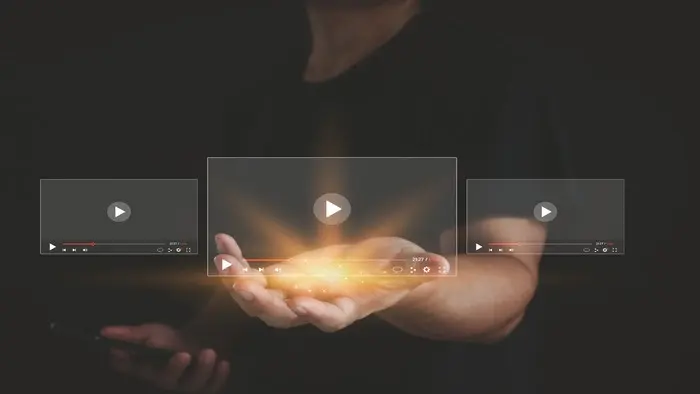Tugging at Heartstrings: Showcasing Your Nonprofit Mission Through An Emotional Video
If you’re a non-profit organization, you understand the importance of sparking an emotional connection with audiences more than most types of...
We live in a world flooded with video content, most of which we tune out, click off, or allow to drift across our screens, never to be thought of again. The greatest challenge facing marketers today is how to be heard over and amidst the noise. “How do we capture people’s attention?”
The answer is surprisingly simple, but it is also extremely difficult to achieve.
The glimmer, the spark, the note that will resonate with your audience is genuine, human stories that strike an emotional chord. Stories told authentically, with vulnerability and courage, are what humans have always used to captivate and empower one another.
For the past 18 years, we’ve been helping clients tell their stories through video, and while we have a team of experts in marketing, oftentimes sincere storytelling starts with taking off the ‘marketer’ hat for a moment (although you’ll want to put it on again later), and instead, start with your greatest planning asset--that you are a human being, looking to connect authentically with other human beings.
Once you’ve identified a story (or stories) with that emotional impact, it’s time to start the production process. Here are some “dos” and “don’ts” we bear in mind when it comes to nurturing the emotional impact throughout the video production process.
The person asking the questions during a video interview plays an integral, invaluable role in setting the tone for an authentically emotional video project. It’s very normal for those being interviewed to feel nervous, especially if they haven’t spoken in front of a camera before. Make sure your video producer, or whoever you’re asking to lead the interview, is an empathetic soul who will make your interview subject feel heard, safe, and understood.
Even seasoned professionals can take a few moments to feel comfortable. Start with questions to warm people up, take the time to have a conversation and get to know one another. If your video is dealing with sensitive topics, make sure you let the conversation guide which questions come next, and when needed, give emotional moments space to breathe. If necessary, remind people that their stories will be helpful for others to hear. Be grateful for their sharing.
We all crave genuine communication. People are tired of being “pitched” and will tune out as soon as they hear a commercial. Resist the urge to talk about yourself.
People love people. If you can introduce someone your audience cares about, you will trigger a compelling, emotional response. By introducing them within the first few moments, there is a greater chance that your audience will stay with your message long enough for you to build the story.
Professional voice talent, third-party endorsements, or “senior leaders” are not the best way to deliver an emotional message. “Corporate speak” copy or teleprompter messages almost always come across as contrived.
If you are demonstrating customer satisfaction, put your customers on camera. If you are recruiting, have your employees explain why it’s a great place to work. If you are a nonprofit, have someone you helped describe the experience and what it meant to them. If possible, use the “direct address” approach where your subjects speak directly to the camera.
Just like when you’re watching a great movie, a loud noise or distraction will quickly wreck the moment. Resist the urge to add clutter, and instead, simply let the story speak for itself. We worked with Catholic Charities to tell the story of Karl, one of their residents, and the piece speaks for itself--uninterrupted--in this Emmy-winning Dorothy Day Center video.
Remember, powerful visuals reveal more emotion than any words can. Don't overcomplicate your story with fancy transitions or graphics. A good story will stand alone, as it has since the dawn of time.
Wide shots and medium shots should establish content and an overall setting, but as soon as that is accomplished, make the scene more intimate.
Video has the wonderful capability of being a magnifying and isolating tool. Bring your viewer in as close as you dare to focus attention on the important details and nothing else. Check out how intimate these moments are with kindergarteners in this video for Eden Prairie Schools.
When creating an emotional video, it's important to understand how all the different creative elements will influence the overall feel of your video. Utilizing these elements is essential to creating a quality video.
Color affects the way we mentally process video. Each color on the color wheel affects our mood and emotion in a different way. For example, red may signal stress, blue may convey sadness, and gold and orange may cue warmth and happiness. Harnessing colors in your video can drastically change how audiences react. Check out this snippet on color and video from the Pixar in a Box lesson from Khan Academy.
The right music is essential in video projects. Music should be present but not overwhelming. It should help you understand what's happening without being overtly obvious. When selecting music, it's important to consider how it changes the tone and feel of your shots.
A relatively somber interview can be transformed with light and upbeat music, whereas using music that is too happy can feel tonally off-putting in a somber piece.
Music can also help communicate a shift in a video. By changing music, you can show that the story is changing, that there is some kind of tension or resolution.
Listen to the music in this video about Greystone Golf & Country Club. The upbeat beginning sets the tone that this is a fun place, then it transitions to be more intimiate when you start hearing the stories of the Members. It transitions again when the focus shifts to the cuisine and a then slight pause and a musical flourish introduces the final soundbites where Members describe what a special play Greystone is for them. These subtle choices help a viewer feel the emotion throughout the video.
Your subject, the “talent,” will be the lifeblood of your video. Emotion (or lack thereof) will show through right away. Consumers will immediately register a subject’s passion or pain, or alternatively, tune out a salesy business owner. Choose an interview subject who is genuinely emotional about your product, service, or results.
Take the time to find these people. Interview your customer service team, talk to sales, and find people who will be the best ambassadors for your company. Sometimes, this can take a while, but we guarantee you that finding the right person is time well spent.
We find that the most emotional scripts come from the best stories, not just from a perfectly crafted video script template (although a good script is a huge help!). Asking the right questions and getting the best answers will help you tell an authentic story.
Okay, now is the moment to re-don your marketing hat. What are you trying to achieve through this video? What is the motivation? We’ve learned that matching the emotions in your videos with where your audience is in their buyer’s journey can help to guide the tone of the piece.
When trying to drive awareness, viewers are looking to be inspired to action, and it's important to focus on positive and uplifting emotions like these:
When trying to drive conversions, it's important to move beyond inspiration into deeper emotions, like these:
By applying these production techniques to your next video, you’ll have a greater chance of making that desired emotional connection with your audience. If you’re looking for help, be sure to hire a team that you trust can handle these situations delicately. Remember, be kind when asking tough questions that get to the heart of a deeply authentic, emotional story.
If you share the right stories, your audience will give you their attention--gladly and with gratitude.

If you’re a non-profit organization, you understand the importance of sparking an emotional connection with audiences more than most types of...

It’s an art form as old as time.

There is no greater endorsement for a brand than one that is created organically and delivered altruistically; unsolicited and entirely authentic.